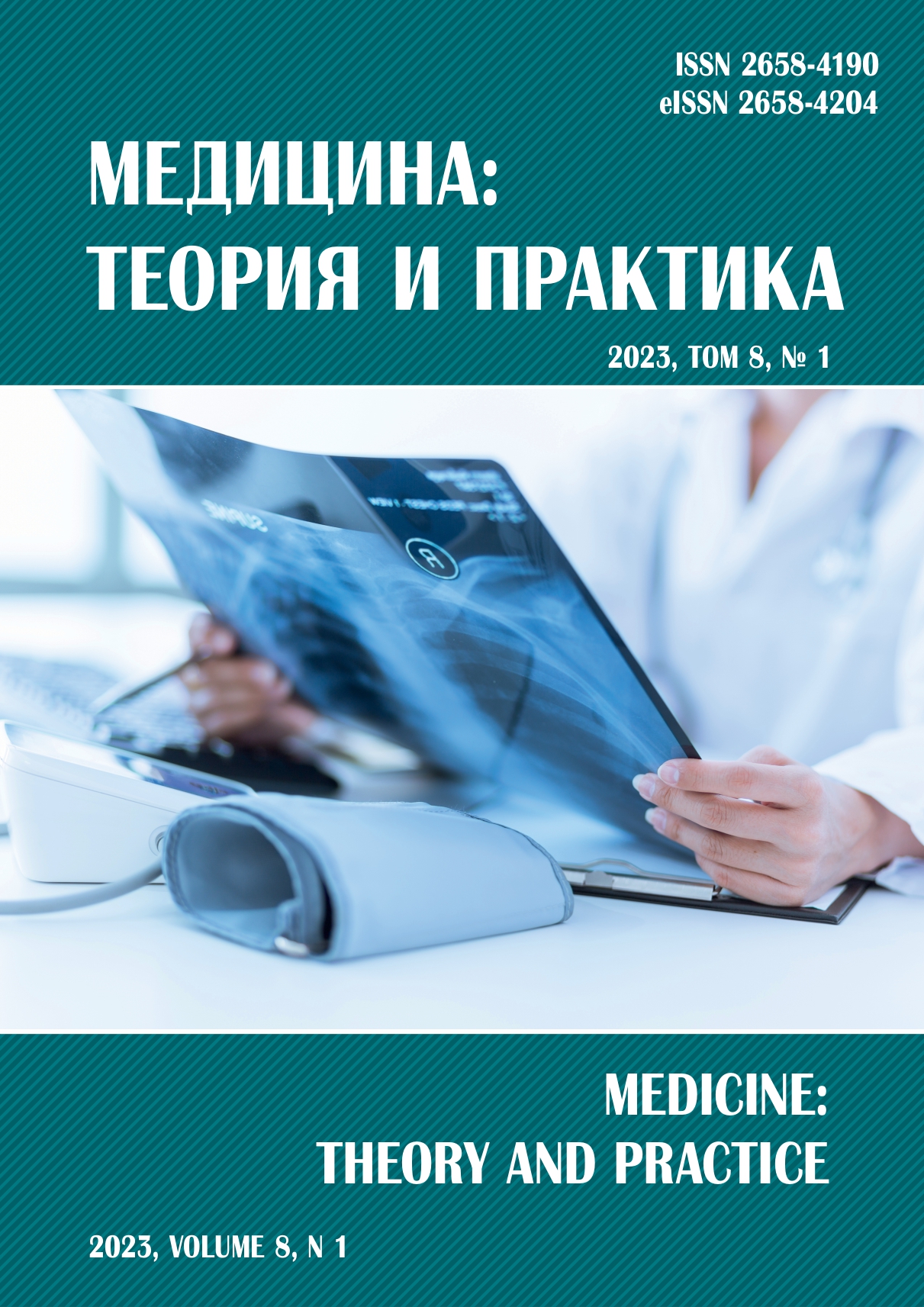PREVALENCE AND STRUCTURE OF CARDIAC ARRHYTHMIAS IN ATHLETES IN CYCLIC SPORTS
Abstract
Background. Cardiac arrhythmias are a serious problem in sports medicine. Purposes and tasks. To study the structure of potentially dangerous arrhythmias associated with cardiac remodeling and their dynamics during the annual training cycle in sports with a predominant development of endurance. Materials and methods. Athletes of cyclic sports (academic rowing and cross-country skiing) were studied — 72 people and 10 handball players. Age 18–25 years old, not lower than the 1st sports category. 24-hour Holter electrocardiography monitoring, echocardiography were performed, general physical performance was determined by PWC170. Results. In the group of athletes with cardiac arrhythmia, ventricular extrasystole was detected in 47 % of cases. Supraventricular extrasystole occurred in 34 % of athletes, mainly it was multiple extrasystoles — 18.5 % of athletes. Suppressed sinus node syndrome was diagnosed in 19 % of athletes. In 15.6 % of cases, extrasystoles were combined with migration of the rhythm driver and in 9.4 % with atrioventricular blockade of the 1st degree. Additional chords were detected in 21.8 %, mitral valve prolapse — in 15.6 % of athletes with cardiac arrhythmia. Potentially dangerous arrhythmias in rowers and handball players were most often diagnosed (at p < 0.05) during the last competitive period of the annual training cycle — in 37.5 and 20 % of cases, relative to 8 and 5 %, respectively. Conclusion. The data obtained confirm the need to increase the adaptive potential of the cardiovascular system and organize effective post-exercise recovery during periods of the most intense training in order to prevent both local heart overstrain and non-functional overstrain and overtraining syndrome in athletes in cyclic sports.
References
Василенко В.С., Мамиев Н.Д., Семенова Ю.Б. Профилактика срыва адаптации сердечно-сосудистой системы у спортсменов методом криотерапии. Педиатр. 2018; 9(6): 83–92. DOI: 10.17816/PED9683-92.
Василенко В.С., Семенова Е.С., Семенова Ю.Б. Липиды крови у спортсменов в зависимости от направленности тренировочного процесса. Педиатр. 2017; 8(2): 10–4. DOI: 10.17816/PED8210-14.
Варлашина К.А., Балыкова Л.А., Власова Е.И. и др. Распространенность нарушений ритма и проводимости сердца у юных спортсменов. Огарёв-Online. 2019; 123(2): 1–7. Доступен по: https://journal.mrsu.ru/arts/rasprostranennost-narushenij-ritma-i-provodimosti-serdca-u-yunyx-sportsmenov. (дата обращения 16.09.2022).
Варлашина К.А., Балыкова Л.А., Ивянский С.А. и др. Нарушения ритма сердца у юных футболистов, распространенность и подходы к коррекции с использованием метаболического средства. Педиатрия и детская хирургия. 2019; 97(3): 36–9. Доступен по: https://elibrary.ru/download/elibrary_42197853_43306100.pdf (дата обращения 16.09.2022).
Гаврилова Е.А. Современные представления о синдроме перетренированности. Спортивная медицина: наука и практика. 2013; 10(1): 77–8.
Земцовский Э.В., Тихоненко В.М., Реева С.В., Демидова М.М. Функциональная диагностика состояния вегетативной нервной системы. Санкт-Петербург: Институт кардиологической техники; 2004.
Лопатин З.В., Василенко В.С., Карповская Е.Б. Роль повреждающих эндотелий факторов в патогенезе кардиомиопатии перенапряжения у спортсменов игровых видов спорта. Педиатр. 2018; 9(6): 57–62. DOI: 10.17816/PED9657-62.
МКБ 10 — Международная классификация болезней 10-го пересмотра. Доступен по: https://mkb-10.com/index.php?pid = 8232 (дата обращения 16.09.2022).
Шарыкин А.С., Бадтиева В.А., Ключников С.О. и др. Критерии допуска совершеннолетних лиц к занятиям спортом (тренировкам и спортивным соревнованиям) в соответствии с видом спорта, спортивной дисциплиной, полом и возрастом при заболеваниях, патологических состояниях и отклонениях со стороны сердечно-сосудистой системы. Методические рекомендации. М.: Федеральное медико-биологическое агентство; 2020. Доступен по: https://www.sportfmba.ru/nauka/metodicheskie-rekomendatsii-2/download/82-piblic-metodicheskie-rekomendatsii/970-kriterii-dopuska-sovershennoletnikh-lits-k-zanyatiyam-sportom-trenirovkam-i-sportivnym-sorevnovaniyam-v-sootvetstvii-s-vidom-sporta-sportivnoj-distsiplinoj-polom-i-vozrastom-pri-zabolevaniyakh-patologicheskikh-sostoyaniyakh-i-otkloneniyakh-so-
storony-serd (дата обращения 16.09.2022).
Barold S., Padeletti L. Mobitz type II second-degree atrioventricular block in athletes: true or false? Br J Sports Med. 2011; 45(9): 687–90. DOI: 10.1136/bjsm.2008.047365.
Biffi А., Maron В., Culasso F. et al. Patterns of ventricular tachyarrhythmias associated with training, deconditioning and retraining in elite athletes without cardiovascular abnormalities. Am. J. Cardiol. 2011; 107(5): 697–703. DOI: 10.1016/j.amjcard.2010.10.049.
Carbone А., D’Andrea А., Riegler L. et al. Cardiac damage in athlete’s heart: When the “supernormal” heart fails. World World J Cardiol. 2017; 9(6): 470–80. DOI: 10.4330/wjc.v9.i6.470.
Pelliccia А., Sharma S., Gati S. et al. 2020 ESC Guidelines on sports cardiology and exercise in patients with cardiovascular disease: The Task Force on sports cardiology and exercise in patients with cardiovascular disease of the European Society of Cardiology (ESC). European Heart Journal. 2021; 42(1): 17–96. DOI: 10.1093/eurheartj/ehaa605.
Sharma S., Drezner J.A., Baggish A. et al. International Recommendations or Electrocardiographic Interpretation in Athletes. J. Am. Coll. Cardiol. 2017; 69(8): 1057–75. DOI: 10.1016/j.jacc.2017.01.015.



